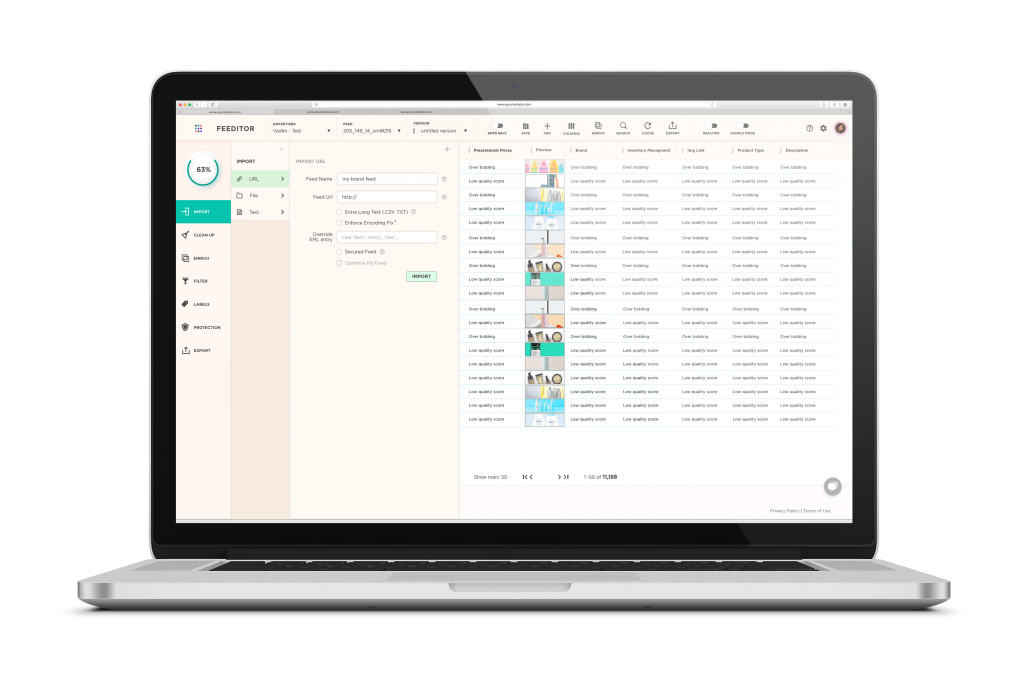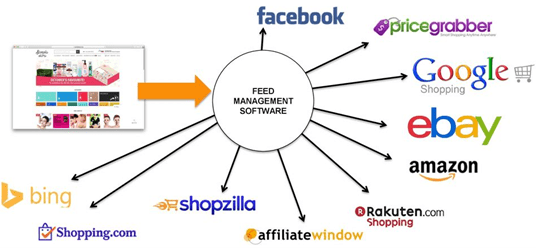No Need For A Developer: How To Automate Your Product Feed
Whether you are managing or advertising an online eCommerce shop, you are probably familiar with product feed in one way or another. In the time of performance marketing, it’s important to understand what is exactly a product feed, how to use it in your digital advertising campaigns, and most importantly drive more sales by using it correctly.
How to Automate Your Product Feed?
More and more eCommerce businesses are now understanding the importance of having a quality product feed that contains all the relevant information regarding their products. Those include informative titles and descriptions, all the relevant attributes of the products as color, brand and size, product availability, and much more.
On top of that, our dynamic world forces eCommerce businesses to react fast to changes and update their products’ feed accordingly – change titles, update inventory, add promotions prices, and then update it on all of the advertising platforms. Sounds like a lot of work, right?
Luckily, if you learn how to create product feeds correctly while using the right tools, all these workloads will be done with almost zero effort.
In this article, you will find the tips you need to get the most out of your product feed and turn it into a super feed using automation tools that ultimately will boost your sales and profit.
So, what is a Product Feed?
A product feed, also known as Data Feed, is a txt. or XML file that contains a list of all your products and the products’ information. With one click you can use this Data Feed, which is an online file, to send all the information about your products to multiple platforms such as Google, Facebook, and a lot of other websites. This is what a product feed looks like:

Why you should use Automation?
If you have multiple SKUs (stock-keeping units) in your merchant store, an automated and simple product feed tool will help you manage your inventory efficiently while saving time and effort.
Remember that it is vital to provide the most up-to-date information to all of your marketing channels. Thus, if you frequently make changes in the product catalog information such as inventory and pricing updates, an automated feed is a great thing to have. You can update the information in bulk and your customer will see the correct information in real-time.
Also, if you advertise on multiple channels like Google, Facebook, eBay, or Amazon, automated feed tools can tailor your feed according to each platform’s requirements.

How to turn your Product feed into a Super Feed?
1. Search Terms Optimization
Make sure you are adding relevant terms to your product’s title and description, based on what your customers search for. When a user is searching for a certain term that appears in your feed, it increases your ad rank and the possibility of your ad to show. Adding relevant search terms will increase the likelihood of a user clicking on your ad and eventually purchasing the item. Therefore, make sure you add the same keywords that you are targeting in your eCommerce campaigns. You should also include synonyms that users might use to describe the product and mix different combinations.
For example: Brand + Product Type, Product type + Brand + For Gender, Product Type + Attribute (Color / Size).
At times, all you need to do to drive more sales to your eCommerce store is to improve your product feed's quality. Learn how to do it effortlessly.
2. Customize Your Product Feed To The Platform
As mentioned above, the content of your product feed is generated from the website and contains specific data. This is not enough for some platforms. Google Shopping, for instance, requires a column called Google Product_Category attribute in the product feed file.
Field names vary between platforms as well. For example, the product image column in the product feed is named Image. However, Facebook Catalog requires the field to be named image_link whilst Google Merchant Center only identifies it under the name image_URL. This means you will need to create 3 different feeds. It’s quite tiring and as mentioned before, with automated product feed tools, you won’t have to.
You can customize the product feed to fit all the platforms’ requirements which will save you a lot of time and effort. That means that you can easily manage all the information you send to all your advertising platforms in one place. Amazing, isn’t it?
3. Feed Enrichment
The more information you add – the better! Although there are only several columns required per platform, add optional information to your product feed. Go over each advertising platform column checklist – and make sure to add it and offer your customer all the possible information about the product.
Add brand, color, dimensions, material, price, promotion price, shipping time, carrier, and basically the information that is important to your clients to complete their purchase. Don’t forget – Customers need to know what they buy when it will get to them, and how much it will cost. Adding all this data will give you a good starting point in comparison to your competitors that do not offer this information.
4. Live Feed Updates
eCommerce businesses frequently update their product feed due to the changes in item quantity, out-of-stock, prices, and product attributes. Updating these changes for all products manually takes a lot of time. On top of that, when you’re advertising on multiple platforms, you’ll need to update them for each platform.
When you have frequent changes, an advanced automated feed tool is almost trivial. As everything is online, the update will happen instantly and live. You can schedule a daily and hourly update that sends all changes to your digital platforms at once. So basically, imagine a scenario where a client purchases the last unit of one of your items, the quantity immediately updates in the feed to 0 and automatically marks the item as ‘out of stock’ on every platform catalog you presented it on. In fact, it will save you a LOT of time and headache when dealing with manual data work.
5. Clustering
Clustering is when you apply filters and rules to manipulate your feed into creating groups based on specific characteristics. With the help of advanced product feed tools, you can create different types of clusters that will improve your sales and profit.
For example, you can create clusters by top-selling items, non-selling items, and all the rest. Then you can advertise each group using a different bid strategy that will help you reach your goals. Another example is to create clusters based on product profit margins – low, medium, and high-profit margin, and then use different bid strategies per group. In fact, by using automated tools, you can carry out various advertising strategies to optimize your business’ performance and KPI’s.
To sum it up
- Make sure you add relevant search terms.
- Customize your data per platform.
- Enrich and add as much information as possible.
- Use the schedule and live updates to keep your product information up-to-date.
- Leverage your feed to carry out advertising strategies to reach optimal goals.
And most importantly, don’t forget to integrate tools that will automate complex processes that will save you time. Now that you know what an automated products feed is, why it’s important and how to optimize it, it’s time to turn it into a super feed!
Trending Articles
Get exclusive CMO tips that I only share with email subscribers.
Related Articles


